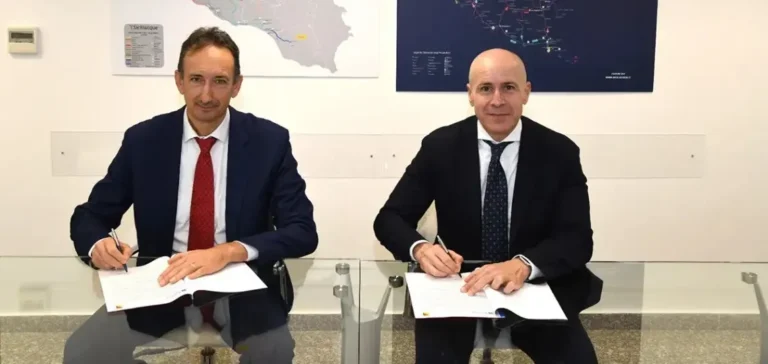Terna SpA presented in Palermo its new 2025-2034 ten-year plan aimed at transforming Sicily’s electricity grid with an investment of EUR3.5bn ($3.77bn). This is the highest amount allocated to any Italian region for this period, illustrating Sicily’s central role in the national energy infrastructure strategy. The plan was unveiled in the presence of the new Regional Energy Councillor, Francesco Colianni, with a focus on coordination between Terna and local authorities to ensure grid security and transport capacity.
Strategic investments and new projects
The flagship project of the plan is the Tyrrhenian Link, a double 500 kV direct-current submarine cable connecting Sicily to Campania in the east (490 km) and to Sardinia in the west (480 km), with a transmission capacity of 1,000 MW per branch. Installation of the eastern branch cable, spanning 490 km, was completed in May 2025, reaching a record depth of 2,150 metres for Italian infrastructure. According to Terna, this project is designed to meet growing demand for renewable energy integration while limiting grid congestion.
Terna states that installed renewable energy capacity in Sicily must increase by 10.48 GW by 2030 compared to 2021, in order to meet national burden sharing objectives. Connection requests to the high-voltage grid in the region stand at 81 GW for renewable installations, with a further 53 GW for storage.
Grid modernisation and interconnections
Beyond the Tyrrhenian Link, the plan includes two new 380 kV lines between Chiaramonte Gulfi and Ciminna (172 km), and between Caracoli and Ciminna. The first will connect the east and west of the island, enabling increased energy exchanges, while the second will strengthen the internal grid’s connection to the Tyrrhenian Link, improving supply security in western Sicily. In parallel, the Partinico–Fulgatore line (220 kV) will contribute to system stability.
In eastern Sicily, work is underway on the Paternò-Pantano-Priolo line (63 km), crossing the provinces of Catania and Syracuse. Commissioning this line will allow for the dismantling of 155 km of old lines and the removal of 400 pylons, freeing up 300 hectares.
Training and international-scale projects
To support the energy transition and develop specialised skills, Terna launched a Master’s programme in “Digitalisation of the electricity system for the energy transition” as part of the Tyrrhenian Lab, in cooperation with the universities of Palermo, Cagliari, and Salerno. To date, 60 Sicilian students have been hired by Terna, with this number expected to reach 80 following the launch of the fourth edition in June.
Other major projects include Elmed, a 200 km submarine interconnection between Italy and Tunisia, built in partnership with the Tunisian Company of Electricity and Gas (Société Tunisienne de l’Électricité et du Gaz, STEG). Integrated into the Mattei Plan for Africa, this project aims to foster renewable integration and strengthen security of supply between Europe and Africa.
Operation of Sicily’s grid currently relies on three main 380 kV lines, a 220 kV ring, and several interconnection projects, including the Bolano-Annunziata submarine cable between Sicily and Calabria, recently authorised by the Italian Ministry of the Environment and Energy Security. This will bring interconnection capacity to 2,000 MW between the island and the mainland.






















